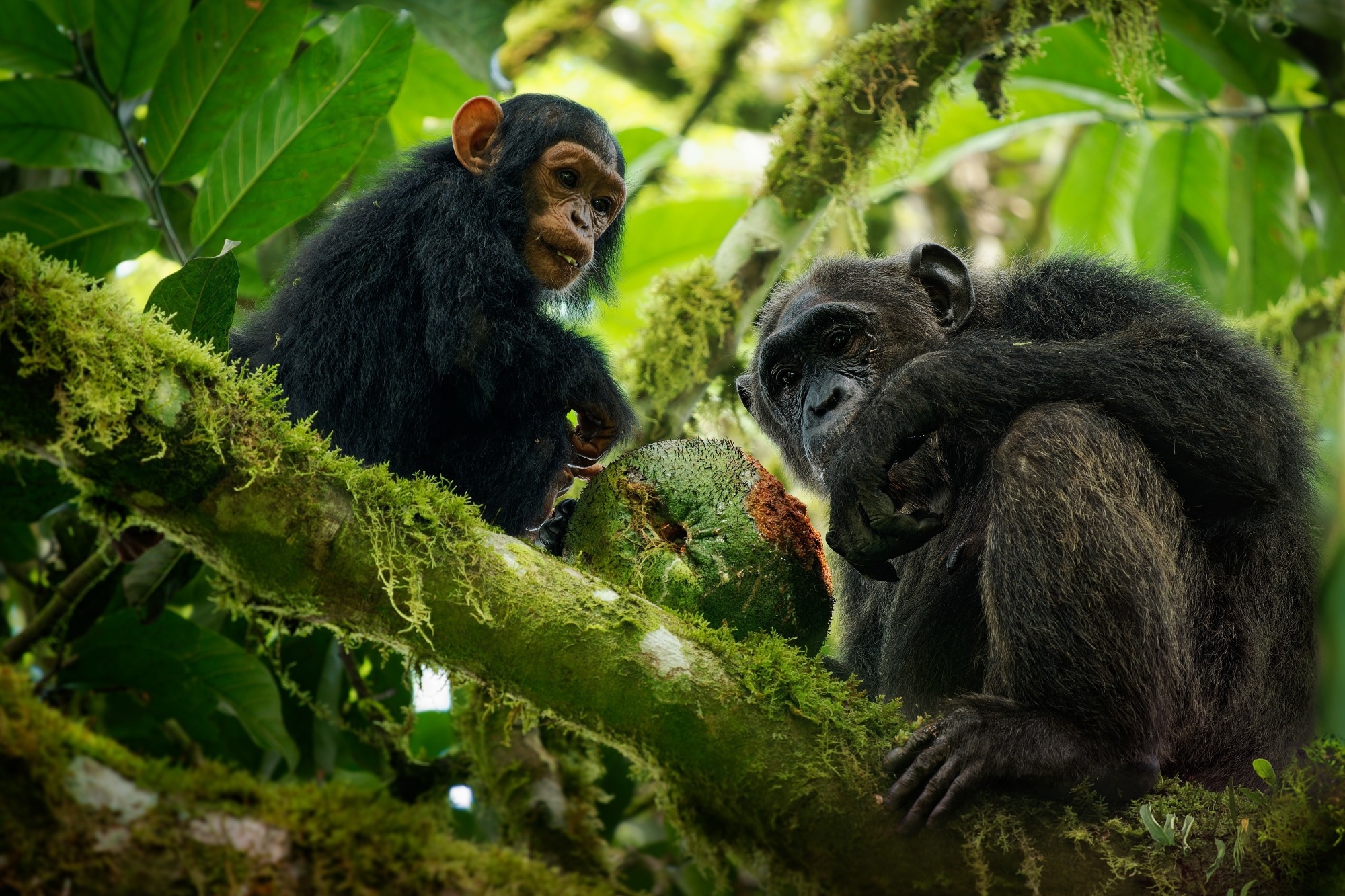Wild chimpanzees have been observed to consume plants that do not have any noticeable nutritional value but contain bioactive compounds that could be toxic. This behavior is speculated to be self-medication, where the chimpanzees consume these potentially toxic plants to combat illnesses and infections.
In a recent study published in PLOS ONE, researchers from Africa and Europe observed habituated chimpanzee communities to understand this potentially self-medicating behavior. It analyzed the plant parts the chimpanzees were observed to be consuming for anti-inflammatory and antibacterial properties.
 Study: Pharmacological and behavioral investigation of putative self-medicative plants in Budongo chimpanzee diets. Image Credit: Martin Pelanek/Shuttestock.com
Study: Pharmacological and behavioral investigation of putative self-medicative plants in Budongo chimpanzee diets. Image Credit: Martin Pelanek/Shuttestock.com
Background
Plants produce secondary metabolites such as phenolic compounds in certain differentiated cells to defend against herbivore predators, pests, and competitors. Some secondary metabolites have anti-microbial and anti-fungal properties to protect the plants against microbial or fungal pests. When consumed, these compounds can also protect other animals, including humans, against pathogens and parasites.
While plants with medicinal properties often form a part of the natural diet of many animals, very few species apart from humans have been observed to self-medicate intentionally.
Self-medication behavior is the intentional extraction and ingestion of medicinal foods by an ill individual. Chimpanzees, our closest living relatives with whom humans share 98.8% of their genome, have been known to engage in therapeutic self-medication.
About the Study
In the present study, researchers observed two habituated communities of the Eastern chimpanzee species Pan troglodytes schweinfurthii in the Budongo Central Forest Reserve in Uganda. They collected health and behavioral data over four months.
The plants targeted by the chimpanzees during what was speculated to be self-medicating behavior were also collected for pharmacological analyses.
The behavioral data included recordings of unusual feeding events such as ingesting bark, eating dead wood, stripping and ingesting pith, and geophagy. Individual chimpanzees that had visible wounds or had been identified to have higher than normal parasite loads or known illnesses were selected for focal follows.
Health data were obtained for individual chimpanzees through urine and micro- and macroscopic fecal analyses.
Opportunistic parasite load assessments were also conducted to determine any helminth infestations since the presence of some helminths lowers the animal’s immune response to protozoan, bacterial, and viral pathogens.
Proglottids and helminths found in the fecal samples were identified, and the fecal samples were used to quantify parasite load.
Additionally, the urine analyses assessed metrics such as leukocyte counts, peroxidase activity in blood, and ketone levels to test for urinary tract infections, viral infections, glomerulonephritis, bladder tumors, diabetes, starvation, etc.
Nine plant species were identified for collection, and samples were collected from each species. The plant species and parts were identified based on observations of individual chimpanzees targeting specific plants and parts for putative self-medication.
Five more species were collected based on historical knowledge of barks of these species being found in chimpanzee diets.
The extraction of metabolites from the plants was conducted using three methods: two using different solvents and one in which a mixture of solvents was used. The extracted metabolites were used to test for antibacterial and anti-inflammatory activity using antibacterial and cyclooxygenase 2 (COX-2) inhibitor assays, respectively.
Major Findings
The study found that the chimpanzees consumed several plant species that had medicinal properties. Of the 53 extracts screened for antibacterial activity, 45 showed significant inhibitory capacity at about 250 µg per ml concentrations.
The extract obtained from the dead wood of Alstonia boonei using the solvent n-hexane was found to have strong inhibitory action against Enterococcus faecium and Staphylococcus aureus.
Similarly, the Khaya anthotheca resin and bark extracts obtained through methanol-water extraction effectively inhibited Escherichia coli and E. faecium.
The researchers observed chimpanzees with high parasite loads ingesting parts from A. boonei and K. anthotheca. Chimpanzees with injuries or infections were also found to target K. anthotheca resin and bark.
The COX-2 inhibitor assay results indicated that 17 extracts out of the 51 tested for anti-inflammatory properties showed significant COX-2 inhibition activity at concentrations as low as 5 µg per ml. The dose-response experiment also reported that several extracts exhibited anti-inflammatory activity.
Methanol-water extracts of the K. anthotheca resin and bark exhibited the highest anti-inflammatory activity. Extracts of Christella parasitica, a fern species, also showed significant anti-inflammatory activity, and an injured chimpanzee was observed to consume this fern.
Conclusions
To summarize, the researchers conducted behavioral observations of wild chimpanzees to understand self-medication behavior and assess the pharmacological properties of extracts from the plants the chimpanzees were observed to consume when injured, unwell, or having high parasite loads.
The findings confirmed that wild chimpanzees indulged in self-medicating behavior and ingested plant parts with significant antibacterial and anti-inflammatory properties.
The researchers believe that further studies in this field will broaden our understanding of zoo pharmacognosy and help identify potential plant sources of novel medicines that can help combat the rapidly growing problem of drug resistance.